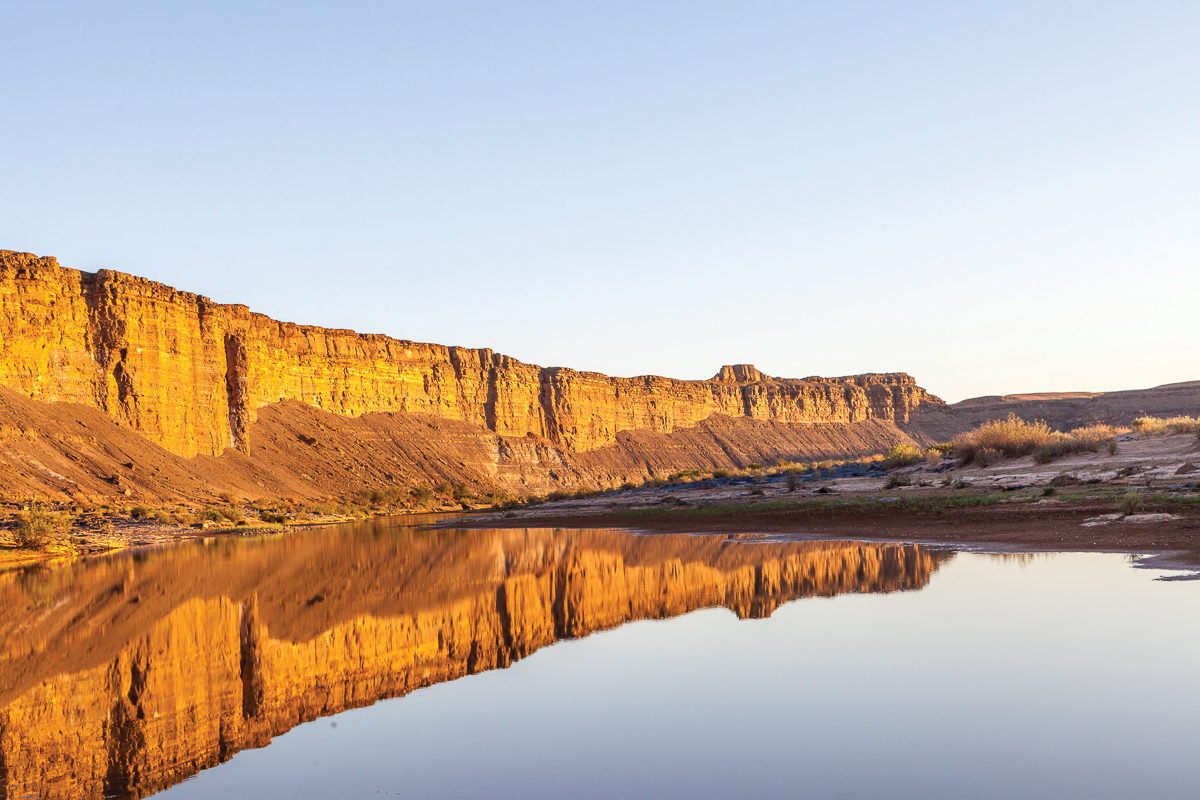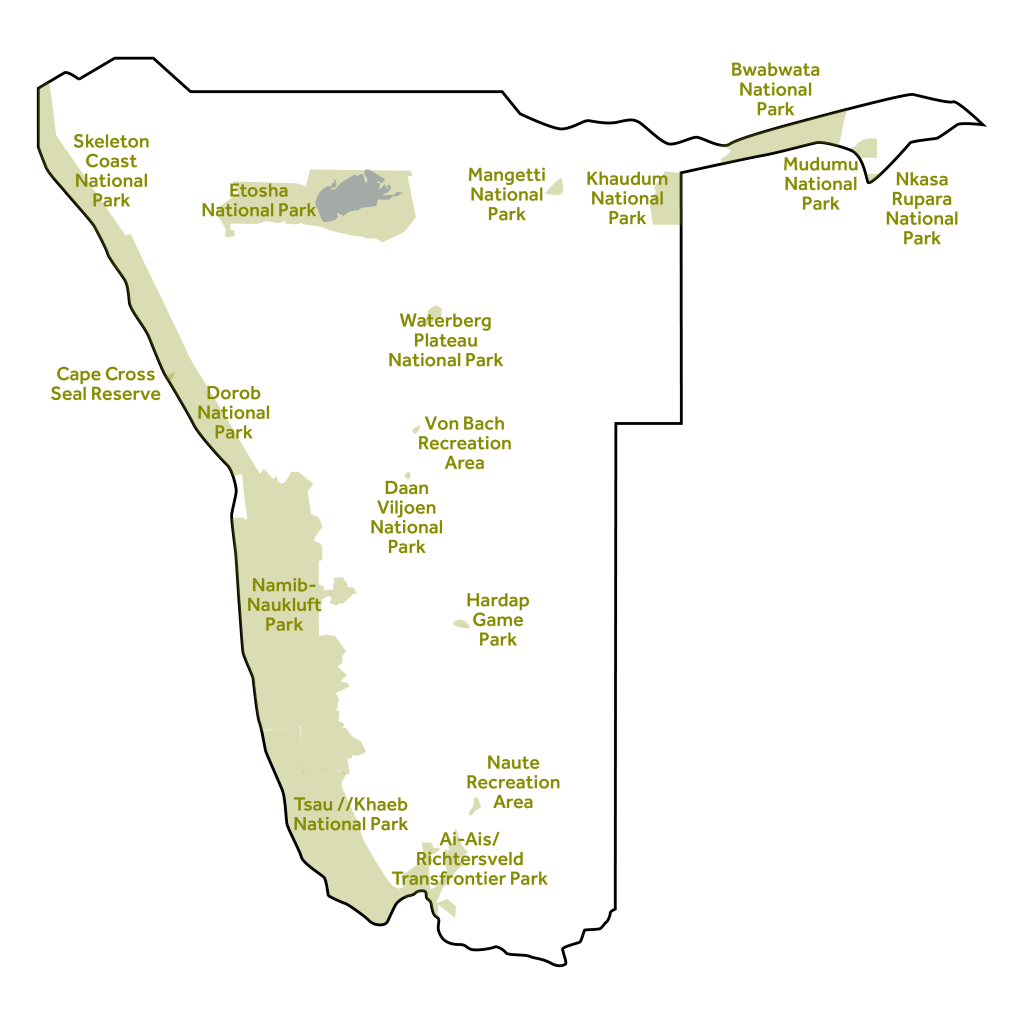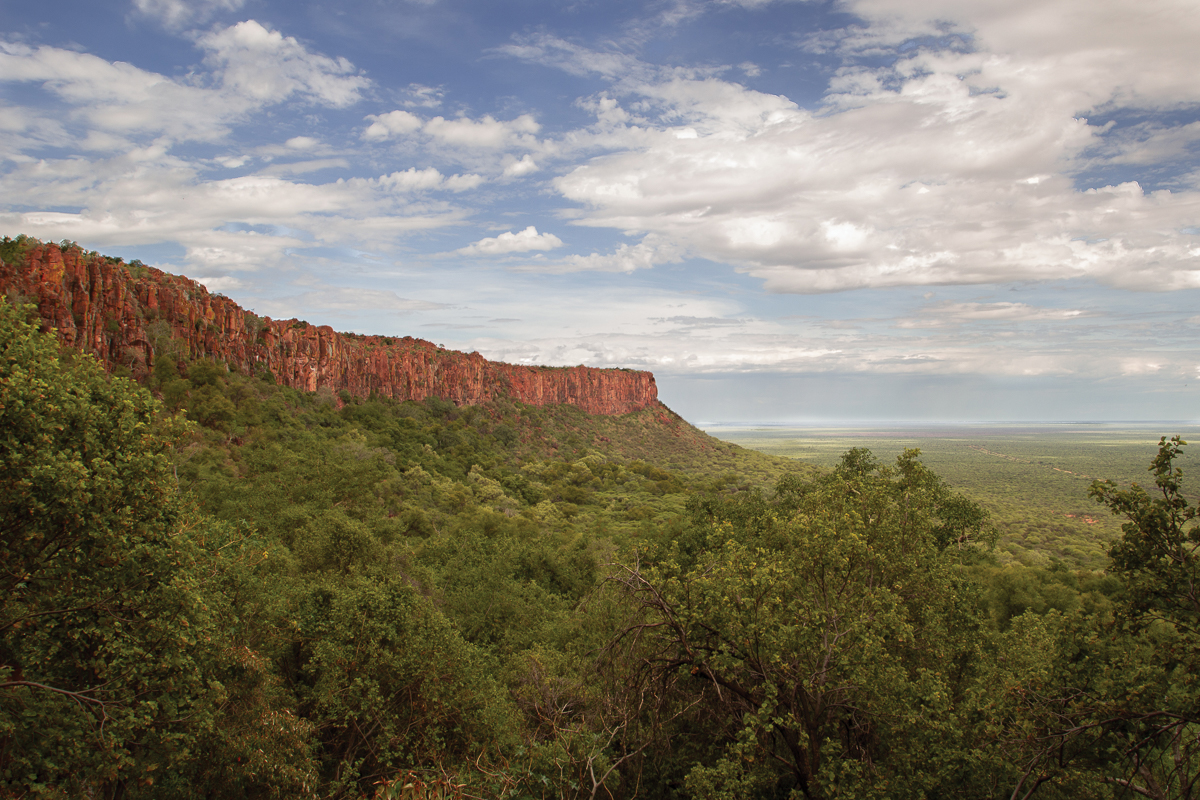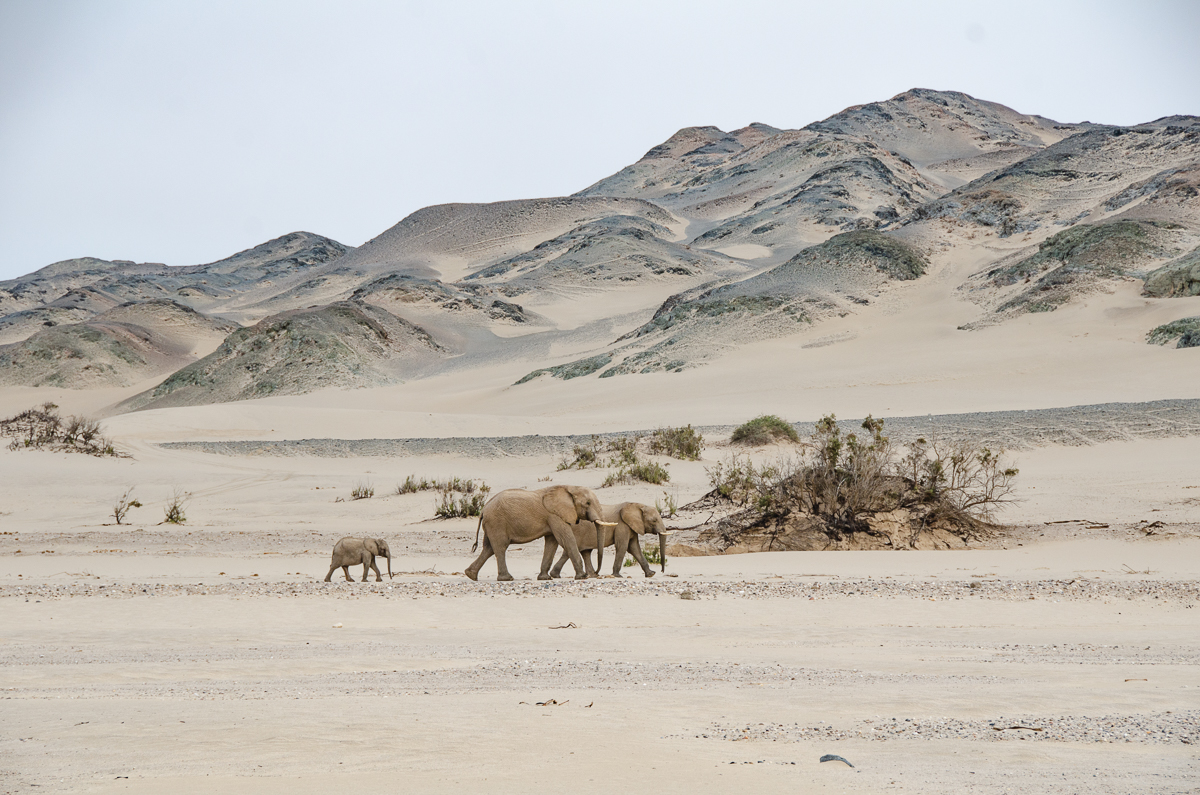

Conserving the extraordinary: Namibia's National Parks
This spring we celebrate Namibia’s acclaimed conservation areas as a cornerstone of our Green Issue. So let us embark on an awe-inspiring, although highly summarised journey through the untamed hearts of Namibia’s national parks. Hundreds of magazine pages are needed to truly share the story of each of these remarkable havens of nature, but we will try our best to share the highlights with you, and in doing so, hopefully inspire and beckon the adventurous souls to come and explore the tapestry of diverse landscapes and rare wildlife encounters that are found in Namibia’s incomparable national parks. Let the allure of Nkasa Rupara, Skeleton Coast, Tsau //Khaeb and so many more ignite your wanderlust as we dip our toes into their enchanting stories, reminding us all of the vital role we play in safeguarding our planet’s most treasured ecosystems.
Text Elzanne McCulloch
From the Spring 2023 issue

Tsau //Khaeb National Park: A wilderness reborn
Once known as the forbidden territory due to its diamond riches, Tsau //Khaeb National Park now stands as a testament to conservation and renewal. Home to the unique Succulent Karoo biome, this protected area boasts a remarkable diversity of succulent species, making it one of the world’s top biodiversity hotspots. Tsau //Khaeb National Park shows how nature and industry can coexist harmoniously, offering visitors a rare opportunity to witness untouched and pristine wilderness around the interesting and alluring remains of a bygone era of diamond exploration.
/Ai-/Ais Richtersveld Transfrontier Park
Experience the untamed wilderness of /Ai-/Ais Richtersveld Transfrontier Park, where nature’s grandeur unfolds on an unimaginable scale. Stand at the edge of Africa’s largest gorge, the second-largest canyon in the world: the Fish River Canyon. This transfrontier conservation area spans across the South African border and is a sanctuary for the Succulent Karoo biome, one of the world’s most diverse botanical hotspots. For the daring and well-prepared hiker, the five-day, 90-kilometre Fish River Canyon hiking trail promises an exhilarating journey. Descend down steep cliffs to the sandy banks of the Fish River, surrounded by towering canyon walls that reach over 550 metres in height. Klipspringers bound up the cliffs, and Mountain Chats drink from the pools left by the river. The challenging hike through ancient rock formations and isolation makes for a timeless and euphoric experience.
Namib-Naukluft Park: The grandeur of contrasts
Prepare to be awed by the grandeur of Namib-Naukluft National Park, Namibia’s largest conservation area. This park offers a wealth of adventure for the intrepid traveller. Hike through the Naukluft massif’s rugged gorges and paths or challenge yourself on one of the 4×4 trails. Explore the fascinating Sesriem Canyon, marvel at fairy circles, and slide down towering sand dunes in Sossusvlei. The park’s diverse landscapes encompass mountains, the Sand Sea, riverbeds and gravel plains. Encounter unique wildlife and plant life that have adapted to the extreme conditions of the Namib Desert. This extraordinary park, with its stunning contrasts, promises endless discoveries to curious souls.
Hardap Game Park: An oasis in the south
On your journey south, don’t overlook the Hardap Game Park on the upper reaches of the Fish River. As one of Namibia’s largest reservoirs, Hardap Dam offers a welcome relief from the sweltering heat, making it a popular destination for water sports enthusiasts in particular. Enjoy canoeing or boating on the dam. The park’s rest camp, perched high above the northern shore, offers stunning views of the expanse of water. Hardap Game Park is a sanctuary for various game species, such as kudu, gemsbok, springbok and Hartmann’s mountain zebra. Birdwatchers will delight in the abundant birdlife, including flamingos, Fish Eagles and Goliath Herons.
Naute Recreation Area: relaxation by the dam
Kick off your shoes, put up your feet and embrace the serenity at the Naute Recreation Area. Set around Namibia’s third-largest dam, this park welcomes water sports and adventure enthusiasts to indulge in activities such as angling, boating and camping. Surrounded by flat-topped ridges and rust-coloured boulders, the Naute Recreation Area surprises visitors with its verdant charm amid the seemingly barren Karas Region. The park stands as a testament to Namibia’s commitment to preserving its natural wonders, where both locals and travellers find solace in the lap of nature.
Waterberg Plateau National Park: Where dinosaurs roamed
Journey back in time at Waterberg Plateau National Park, where more than 150 million years ago dinosaurs used to roam. Today, this ancient land thrives with a rich variety of plant and animal life, including elusive leopards and herds of sable. As a natural fortress for conservation, this unique park has played a crucial role in protecting endangered species such as black rhino and hosting the reintroduction of wildlife such as eland to the region, all while preserving the region’s ecological balance.

Cape Cross Seal Reserve
Be captivated by the world’s largest breeding colony of Cape fur seals at the Cape Cross Seal Reserve. Located near Henties Bay on the coastal stretch between the Swakop and Ugab rivers, this area is famous for angling and for geological wonders. The colony, home to up to 210,000 seals during the breeding season, is characterised by a cacophony of bleats and barks as massive bulls compete for territory and mating rights. Explore the history of Cape Cross, where Portuguese explorer Diogo Cão erected a stone cross in 1486 as one of the landmarks along his voyage of discovery.
The reserve’s rich marine life sustains a wealth of birds and animals, including Kelp Gulls, Cormorants, orcas and copper sharks. Lichen fields, nourished by fog rising from the cold Benguela Current, contribute to the fragile desert ecosystem.
Dorob National Park: A Desert Adventure
Dorob National Park, bordering the Atlantic coastline, is a diverse landscape comprising gravel plains, sandy beaches, ephemeral rivers and colourful lichen fields. It is part of a conservation project along the coastline that also offers adventure and leisure pursuits for tourists. Activities like quad biking, skydiving, windsurfing or kayaking with seals and dolphins provide thrilling experiences.
Despite the aridity implied by its name (dry land), Dorob surprises with rich fishing waters. Anglers are attracted by species such as kabeljou, galjoen and steenbras. The park’s conservation efforts include preserving endangered species like the Damara Tern, a near-endemic. The vast lagoon at Walvis Bay is a RAMSAR site. Visitors can also explore the ancient Messum Crater, a volcanic ring complex.
Skeleton Coast National Park: Where beauty meets mystery
The hauntingly beautiful landscape of the Skeleton Coast Park has remained one of the world’s last great wildernesses. With its dunes, rocky beaches and nutrient-rich waters, this coastal gem hosts an abundance of wildlife, including desert-dwelling elephants and rare sightings of lions. Its geological wonders tell tales of ice ages and lava flows millions of years ago, which created a dreamscape of sand and rock that mesmerises visitors. The park’s history intertwines with accounts of shipwrecks and survival, adding an air of mystery to its rugged allure.

Bwabwata National Park
Welcome to the future – in Bwabwata National Park, where wildlife and local communities coexist harmoniously. Located across Namibia’s northeastern ‘arm’, this lush area boasts rivers, floodplains, wetlands and forests. It forms part of the Kavango-Zambezi Transfrontier Conservation Area (KAZA), a five-nation conservation area which houses the world’s largest elephant population. Watch hippo-frequented rivers flow gently by, as red lechwe, sitatunga, reedbuck, crocodiles – and hippos – thrive in their natural habitat. Experience the spectacle of Popa Falls on the Okavango River and take guided or unaccompanied game drives to witness the vibrant floodplains and woodland of the Buffalo, Mahango or Kwando Core Areas of the park – each with their own highlights. During seasonal rains, temporary pans on the floodplains offer an ideal setting for birdwatchers, with over 400 bird species recorded. The park’s success lies in the co-management between the Ministry of Environment, Forestry and Tourism, resident communities and conservancies, which is beneficial to both conservation and rural community development.
Nkasa Rupara National Park: Wilderness unleashed
For the true adventurers seeking a raw and authentic African experience, Nkasa Rupara National Park is a dream come true. This vast wetland area offers an extraordinary wilderness waiting to be explored. The park’s diverse landscape, from lush marshes and dense savannah to tall river reeds, creates an ideal habitat for an array of wildlife, including large herds of elephants during the dry season. As a vital part of KAZA, Nkasa Rupara National Park stands as a shining example of cross-border cooperation in preserving biodiversity.
Mangetti National Park: Conservation and community support
Situated southwest of Rundu, Mangetti National Park embodies Namibia’s commitment to conservation and community support. Jointly managed by the Ukwangali Traditional Authority, the park protects wildlife and vegetation while providing socio-economic benefits to local communities. Mangetti offers an abundance of wildlife, including eland, blue wildebeest, leopard, hyena, elephant, rhino, giraffe and the rare sable antelope. Notably, the park is a sanctuary for the African wild dog.
Khaudum National Park: The forgotten wilderness
Nestled in Namibia’s Kavango East Region, Khaudum National Park remains a hidden gem, rarely visited, and wonderfully wild. Adventurers seeking an off-the-beaten-path experience will find solace here. Traverse rugged 4×4 trails that weave through plains and thick Kalahari forests. Witness large herds of elephants and the endangered African wild dog in this protected haven. Khaudum is unique in that it allows wildlife to pursue hereditary migratory routes, linking Namibia, Botswana and Angola. Khaudum’s open-park system supports various wildlife year-round, including rare species like roan antelope. The park’s existence has also fostered conservation-driven community development in surrounding conservancies, benefiting both wildlife and rural communities.
Mudumu National Park: Water and wildlife in abundance
Mudumu National Park boasts an incredible diversity of landscapes, from thick mopane forests to wide floodplains. The Kwando River, the lifeblood of the region, supports a variety of water-loving creatures like elephants, hippos, otters and crocodiles. Rare species, including the red lechwe and sitatunga antelope, thrive in Mudumu’s unique ecosystem. The absence of fences allows elephants and other wildlife to freely migrate between Namibia, Botswana and Angola. Lions, leopards, hyenas and wild dogs roam freely, making Mudumu an environment rich in predators. The park’s conservation efforts have facilitated the reintroduction of various animal species into the region.
Etosha National Park: The spectacle of wildlife
Etosha National Park is certainly the stage for one of the world’s most remarkable wildlife spectacles. Here, amidst the vast plains and immense white clay pan, you can encounter herds of elephants, lion prides and members of the largest population of rare black rhinos. Etosha is home to an astounding diversity of wildlife: 114 large and small animal species and 340 bird species. Explore the park’s 763 kilometres of open roads and be thrilled by the sight of animals on the plains, at waterholes or traversing the bushlands. Watch wildebeest herds, ostrich flocks and zebras in single file emerge from the heat haze to drink at the edge of the magnificent Etosha Pan. At the park’s 86 springs, fountains and waterholes you can witness springbok pronking, jackals prancing and giraffes cautiously approaching the water, trying to elude the large predators that roam the vicinity. Don’t miss the chance to experience the magic of Etosha’s floodlit waterholes at night – be prepared for unexpected wildlife encounters.

Beyond the allure of adventure lies a profound responsibility to protect the splendour of these untamed realms for generations to come. Read more about each of Namibia’s national parks and conservation areas on www.thisisnamibia.com.
More to explore


Discover Airlines launches a new direct flight between Windhoek and Munich





